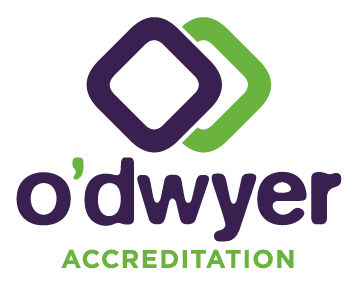
There are 6 key factors to focus on when going for NATA accreditation
So you’ve decided to look into getting NATA accreditation, but it’s early days and the tests aren’t completely set up in your laboratory yet. If you’ve approached NATA, or attended one of their training courses, you wouldn’t be alone if you feel completely overwhelmed by how many things you need to do and how many of them you don’t understand at all.
NATA wants you to send them a whole list of documents and information, but how do you even know if your organisation has the capability to get NATA accreditation?
The process can feel like you are launching into the unknown without a guide.
Don’t despair! We’re here to explain the 6 pillars of technical competence that you need to be capable of getting NATA accreditation.
By prioritising these pillars, you’ll embark on the work-intensive journey of your NATA application with less trepidation and more confidence. Remember, you need all 6 to hold up your plan for success with NATA.
1 Personnel
You need at least one person who will be the testing expert, who will get right into the technical details of the methods. This person may also need to train other staff members on how to do the testing. They need to be capable of reading a new method and working out how to set up the lab to perform the method, using the correct equipment.
If you can find someone with plenty of experience in the tests, this is ideal. Even better if they also have experience in a NATA-accredited lab, but this is not necessary. You might have someone who you are confident, given the time, will get up to speed on the methods and carry the flag for getting NATA accreditation.
You may also need a laboratory manager or an expert in how test results are used, such as a pathologist or an engineer. This kind of expertise can often be contracted in. It’s the in-house technical expert who is fundamental to getting NATA accreditation.
NATA does have some specific requirements for staff in the standard application document (ISO 15189) and specific accreditation criteria (ISO 17025).
If you want to get NATA accreditation at the same time as maintaining business as usual, you will need to make some hard choices. Something has to give. If you choose not to bring on new staff, you will need to reshuffle your resources and time.
2 Methods / tests
Create a list of the methods you need accreditation for. If you’re not sure where to start, some approaches are:
- Your potential clients – what tests do/will they ask for?
- Your competitors – look them up on the NATA website and download a copy of their scope of accreditation
- Regulators – are there legal requirements for the testing you want to do? Get the regulations and identify test methods from them.
If you having a lot of trouble deciding on this list, you may need to rethink why you want to get NATA accreditation.
Many methods need validation or at least verification. This can take a significant amount of time, not to mention money if you have to buy certified reference materials for the validation.
3 Equipment
Create a list of equipment needed to perform the methods. Some methods are VERY specific about the equipment needed, while others may only suggest possible requirements. The equipment must have the capability to meet method requirements. If the equipment is directly contributing to a test measurement, you will need to have it calibrated.
If the equipment needed doesn’t seem obvious, scan the methods for key verbs such as analyse, extract, weigh, measure, mix, freeze, aliquot and so on, and then ask how will those tasks be performed?
4 Facility and environment
You need a place to do the testing. This could be anything from a bench at a client’s worksite right through to a purpose-built laboratory. How do you work out if the lab you have is good enough?
Read the test methods and the specifications for the equipment you will be using. Think about sample integrity, staff safety and comfort, and security. Ask yourself these questions:
- Is lighting, temperature, humidity or any other condition mentioned in the methods?
- Is contamination of samples going to be a concern?
- Do you need to protect staff from the samples, the testing process or the environment? Or the other way around?
- Does the equipment need any special conditions?
- Check NATA’s standard application document (ISO 15189) and specific accreditation criteria (ISO 17025) for their particular requirements.
5 Calibrations and maintenance
If you’re working on a budget for NATA accreditation, don’t forget to find out how much you will need to spend on calibrations and other regular checks and maintenance. The places to look for this information are:
- The methods
- NATA documents that give guidance or requirements for equipment. Start with the General Equipment Table, then NATA’s Standard Application Document and special accreditation criteria documents relevant to your sector.
- The manufacturer’s specifications.
6 Proficiency testing and QC
Proficiency testing and quality control underpin your confidence in your test results one you have While they can be developed further down the track, if you’re budgeting you need to find out what is available and factor the costs in. Proficiency testing programs and even routine QC can be expensive, especially if samples have to come from overseas.
To find out about proficiency testing programs, start here or check with your industry body. Quality control may be specified in the NATA Standard Application Document for your sector.
And the rest
OK, we all know that there are a lot of other things that need to be designed, documented and implemented to get NATA accreditation, but these can be worked out later on. Make sure you have the 6 pillars of technical competence in place first, then it’s time to develop and document the policies and procedures you need for your quality management system.
Finally ….
It’s no coincidence that most of these pillars come under the heading “Resources” in ISO 17025. Accreditation is not something you can easily add on top of what you or your staff are already doing. It takes time and commitment to get there. Spend the time to build your case for accreditation and justify the investment.
O’Dwyer Accreditation can help you find the information you need to scope out your project. Contact us now to find out more.


